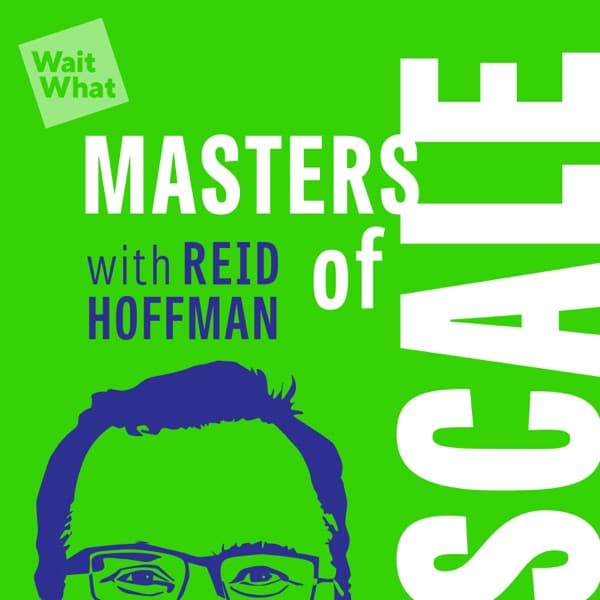TechCrunch: Gradient Ventures, a Google-backed venture fund, focuses on investing in AI-driven startups across various sectors, offering technical mentorship and access to Google's resources.
FirstRoundCapital: Understanding competition is crucial for long-term success, but should not distract from initial product development.
The Twenty Minute VC (20VC): Venture Capital | Startup Funding | The Pitch: Oscar Pierre, founder of Glovo, shares his journey of building a successful food delivery platform, highlighting challenges in fundraising, market expansion, and maintaining company culture.
TechCrunch Startup News: Patlytics uses AI to streamline patent workflows, enhancing efficiency and reducing costs for IP professionals.
TechCrunch Startup News: Codium, an AI-powered coding startup, is raising new funding at a $2.85 billion valuation, focusing on enterprise clients with its agentic AI technology.
TechCrunch - How Gradient Ventures is Shaping the AI Startup Landscape with Eylul Kayin
Gradient Ventures, established by Google in 2017, is a venture fund that invests in early-stage AI-driven startups across sectors like healthcare, finance, and agriculture. The firm operates independently from Google but leverages Google's resources, such as cloud computing and machine learning platforms, to support its portfolio companies. Gradient Ventures has invested in over 250 companies, typically making initial investments ranging from $1 to $10 million. The firm emphasizes backing technical founders who can transform advancements in infrastructure into enterprise-grade solutions. Recent investments include Cascade, which automates employee queries in large corporations, and First Work, which focuses on part-time and seasonal worker management. The firm values startups that offer reliable, scalable solutions and maintain strong customer relationships. They also emphasize the importance of startups having a clear perspective and adaptability to rapidly changing tech cycles.
Key Points:
- Gradient Ventures invests in AI-driven startups, focusing on sectors like healthcare and finance.
- The firm operates independently from Google but uses its resources for support.
- Investments range from $1 to $10 million, focusing on early-stage companies.
- Recent investments include Cascade and First Work, emphasizing automation and worker management.
- Startups should focus on reliable solutions, strong customer relationships, and adaptability to tech changes.
Details:
1. 🔋 Audi's Electric Revolution
- Audi has launched the fully electric Audi Q6 with a focus on effortless power and serious acceleration, marking a significant milestone in their electric vehicle initiative.
- Equipped with advanced Audi Tech, the Q6 offers a transformative driving experience, integrating cutting-edge technology for enhanced performance and user engagement.
- This introduction is a pivotal part of Audi's strategic plan to expand their electric vehicle lineup, signaling a commitment to sustainability and innovation.
- The Audi Q6 is designed to compete in the growing electric SUV market, providing a competitive edge with its unique features and capabilities.
2. 🎶 Welcome Back to Equity
- The segment contains only music with no spoken content, thus no actionable insights or metrics are available.
3. 🚀 Inside Gradient Ventures and AI Investment
3.1. Gradient Ventures Overview and Investment Strategy
3.2. Investment Portfolio and Sector Focus
4. 🔍 The Art of Investing in AI Startups
- AI co-pilots like Cascade in the market have a success rate of 50-75%, highlighting the non-deterministic nature of AI technology compared to traditional software.
- Cascade effectively mitigates AI's limitations by integrating a ticketing system that escalates unanswered queries to human agents, ensuring quick resolution and enhancing enterprise service.
- Investments are being made in companies like 'First Work', which targets part-time and seasonal workers by providing an aggregated platform that integrates onboarding, workflow management, and payroll solutions, addressing gaps left by existing point solutions like Fountain and Travas.
- Gradian evaluates AI startups by assessing scalability, security, and reliability of the solution, similar to criteria used in traditional SaaS evaluations, focusing on automation and infrastructure adaptability.
- There is a shift towards investing in application layers due to decreasing infrastructure costs while focusing on specific customer workflows that drive revenue and business scalability.
- Many AI startups encounter challenges as their cutting-edge technology is not matched by customer readiness, leading them to develop consulting-type layers to facilitate product adoption, similar to Palantir's forward-deployed software engineering model.
5. 💼 Evaluating AI Companies: What Matters
- Companies encounter difficulties in shifting from compelling demos to reliable, repeatable enterprise-grade solutions.
- Technical founders are more likely to receive backing if they possess unique industry insights along with operational understanding.
- Startups need to focus on educating their target customers to ensure they understand and can effectively implement the technology.
- Investors face challenges in scaling from proof of concept (POC) to long-term contracts, often lacking evidence of success in renegotiations.
- Successful companies often focus on vertical specialization, developing strong customer interactions and relationships.
- Example of success: A company scaled from $1.5 million to over $40 million in revenue within a year by maintaining a fast shipping culture and adaptability.
- Early-stage AI founders should adopt clear, adaptable strategies to navigate rapidly changing tech cycles.
- Building a competitive edge requires integrating new functionalities while deepening customer relationships.
6. 📈 Scaling AI Startups: Challenges and Strategies
6.1. Focusing on Customer Needs Over Technology
6.2. Challenges in Scaling AI Startups
6.3. Early Stage Funding Concerns
6.4. Building and Scaling Enterprise AI Applications
7. 🏆 Startup Battlefield: A Historical Perspective
- Gradient prioritizes strategic deployment of resources over the number of investments, leveraging the team's diverse strengths and networks to maximize impact.
- By operating as a high-volume platform with a compact team, Gradient gains insights from observing best practices across numerous companies.
- Startup Battlefield at Disrupt is a prestigious event that provides startups with significant exposure, leading to valuable leads and potential long-term success.
- Participating in Startup Battlefield enables startups to share their stories on a global stage, which can be pivotal for growth and establishing market presence.
- Startups are advised to actively engage and present themselves to maximize visibility and attract potential customers and investors.
- Examples of successful companies emerging from Startup Battlefield include those that have used the platform to significantly boost their market presence and secure substantial funding.
8. 🔗 Connecting with Investors and Final Thoughts
- To effectively connect with investors, entrepreneurs should foster informal mentorships, which can lead to investment opportunities and valuable guidance.
- The Disrupt conference serves as a valuable platform for startups, showcasing success stories like Yammer and Fitbit. Yammer's win led to a high-stakes acquisition attempt, while Fitbit's runner-up position didn't hinder its growth to a market cap of $10-$15 billion, illustrating the potential for post-event success.
- Dropbox's journey from an unsuccessful pitch to significant success highlights that initial setbacks do not define future potential, encouraging entrepreneurs to persist.
- Entrepreneurs should apply to events like Disrupt for exposure and networking, key factors in startup success.
- Connecting with industry professionals via platforms like Twitter and LinkedIn can facilitate networking and investment insights.
FirstRoundCapital - How worried should founders be about competition? #founder #startup
The speaker emphasizes that before achieving product-market fit, focusing too much on competition can be distracting. At early stages, especially before reaching $2 million to $5 million in annual recurring revenue (ARR), it's more important to be aware of competitors rather than acting on competitive analysis. However, in the long run, understanding the competitive landscape becomes crucial. The speaker compares this to preparing for a boxing match, where knowing your opponent is part of the preparation. Companies should be aware of their environment, including potential competitors and partners, to make informed strategic decisions. This situational awareness helps in understanding the roles of large cloud providers and other potential allies or competitors in the long run.
Key Points:
- Pre-product market fit, focus on product development over competition.
- Be aware of competitors but avoid acting on it too early.
- Long-term success requires understanding the competitive landscape.
- Situational awareness is crucial for strategic decisions.
- Consider roles of large cloud providers as potential allies or competitors.
Details:
1. 📈 Pre-product Market Fit and Competition
- Focusing on competition before achieving product-market fit is abstract because competitors and competition areas are not well-defined. This period should focus on developing a strong product-market fit rather than being distracted by competition.
- It is recommended not to overemphasize competition when annual recurring revenue (ARR) is between $2 million to $5 million, as concentrating on competition too early can divert attention from critical product development and customer understanding.
- Achieving product-market fit should be the primary goal, as it provides a clearer understanding of your competitors and market landscape, enabling more strategic competition analysis later on.
2. 🥊 Balancing Competition Awareness
- Companies should not completely ignore competition but maintain awareness for strategic preparation, similarly to athletes studying opponents before a match.
- While the primary focus should remain on internal growth and development, a minor yet crucial part of business strategy should include understanding competitors' moves.
- Strategic preparation involves analyzing competitors' strategies, which can improve a company's own strategic positioning.
- To effectively balance this, companies could allocate minimal resources to competitive analysis, ensuring it does not detract from core business activities.
3. 🌐 Understanding the Competitive Environment
- Evaluate if large Cloud providers are competitors or partners in the long run to enhance strategic positioning. Consider how these relationships impact market dynamics and influence decision-making.
- Maintain situational awareness to navigate the competitive environment effectively. This includes keeping abreast of market trends, competitor moves, and technological advancements to anticipate changes and adapt strategies accordingly.
The Twenty Minute VC (20VC): Venture Capital | Startup Funding | The Pitch - 20VC: The Insane Story of Glovo: Selling 30% of the Company for €100K | The McDonalds Deal That Saved Them | Running out of Money Three Times | Burning $1M Per Day | Being Acquired for $2.2BN with Oscar Pierre, Founder @ Glovo

Oscar Pierre, founder of Glovo, recounts the company's journey from its inception to becoming a major player in the food delivery industry. Initially, Glovo faced skepticism from European VCs, with many passing on investment opportunities. Despite this, the company secured a pivotal deal with McDonald's, which significantly boosted its growth and market presence. Pierre emphasizes the importance of scale in the food delivery business, noting that achieving a large market share is crucial for profitability. He also discusses the challenges of maintaining company culture during rapid expansion, highlighting the need for transparency and alignment with company values. Pierre's story underscores the importance of perseverance, strategic partnerships, and adapting to market dynamics in building a successful startup.
Key Points:
- Securing a major partnership with McDonald's was a turning point for Glovo, enabling rapid growth and market expansion.
- Maintaining company culture during rapid growth is challenging but essential for long-term success.
- Achieving scale is crucial in the food delivery industry to ensure profitability and competitive advantage.
- Fundraising was a significant challenge, with many European VCs initially skeptical of Glovo's potential.
- Strategic market expansion, including entering underdeveloped markets, was key to Glovo's growth strategy.
Details:
1. 📈 The Early Struggles and Breakthroughs of Glovo
1.1. Initial Financial Challenges
1.2. Major Breakthroughs
2. 🚀 The Meteoric Rise and Achievements of Glovo
- Glovo was founded by Oscar Pierre 11 years ago with a vision to revolutionize delivery services. The company began with significant challenges, including selling a third of the company during its pre-seed round for only 100,000 euros, highlighting early financial constraints.
- A pivotal moment in Glovo's history was securing a partnership with McDonald's, which played a significant role in stabilizing and growing the company. This partnership not only saved Glovo from potential financial difficulties but also established it as a key player in the market.
- Over the years, Glovo's strategic maneuvers and growth led to its acquisition by Delivery Hero, marking a significant milestone in its journey. This acquisition underscores Glovo's success and its position as a leading force in the global delivery industry.
3. 🎓 Introducing Kajabi: A Platform for Creators
- Kajabi's customers have collectively generated over $8 billion in total revenue.
- Kajabi users retain 100% of their earnings, with the average user earning over $30,000 annually.
- Kajabi offers an all-in-one suite of tools, including websites, email marketing, digital products, payment processing, and analytics, starting at $69 per month.
- Kajabi allows creators to build and grow their online business without taking a cut of revenue.
- 20 VC listeners can access a 30-day free trial of Kajabi by visiting kajabi.com/20VC.
4. 🔎 AlphaSense: A Game-Changer for Research Professionals
4.1. AlphaSense as a Research Tool
4.2. AlphaSense Features and Market Positioning
5. 🏦 Mercury: Simplifying Banking for Startups
- Mercury offers an easy account setup process, enabling founders like Sanpei Omichi of Ellis.com to open accounts immediately, facilitating quick business operations.
- Mercury provides comprehensive financial services, including Treasury and checking accounts, to streamline financial management for startups.
- Founders using Mercury can efficiently manage their finances and business activities in a centralized platform.
- Mercury is not a bank but partners with Choice Financial Group, Column NA, and Evolve Bank and Trust for banking services, ensuring reliability and FDIC membership.
6. 🌟 Building Glovo: Challenges, Insights, and Expansions
- Glovo was founded in 2015, marking a rapid growth trajectory alongside competitors like Twin ABC.
- Oscar Pierre, the founder, launched Glovo with the vision of creating an 'Uber for errands,' inspired by his observations of his mother's hectic schedule and the Uber launch in Atlanta.
- The initial business model focused on digitizing everyday errands, allowing users to request tasks such as picking up items from stores, highlighting a niche market opportunity.
- A significant market insight emerged when users began ordering McDonald's Big Macs through the app, which revealed a substantial demand for food delivery, even with existing services like Just Eat, indicating a gap in market disruption.
- The company's ability to pivot quickly from errands to food delivery was crucial to its early success, showcasing adaptability and responsiveness to user demands.
- Despite a competitive landscape, Glovo's unique approach to on-demand delivery set it apart, allowing for rapid expansion and market penetration.
7. 🌍 Global Expansion and Market Strategies
- The initial launch in Barcelona identified a gap in the market for a delivery service that also managed logistics, unlike Just Eat which only aggregated restaurants.
- The founder's initial investment was 10,000 euros, which was used to develop a basic app version through a cost-effective Russian developer, leading to a pre-seed funding round of 100,000 euros that valued the company at 280K pre-money.
- The first app version was subpar but served as a prototype to attract investors, leading to profitability and sustainability.
- A significant funding round of 1.5 million followed after gaining traction and orders, including from major brands like McDonald's.
- Achieving product-market fit was challenging due to negative unit economics, but scaling network effects and shifting revenue models improved cost efficiency for customers.
- Marketplace dynamics require scale on a city or national level, with significant investments in brand-building and partnerships, often at a national scale.
- International expansion taught the importance of timing and market leadership, as seen in the failure in Paris due to late entry but success in Milan.
- Launching a new market can take 2-3 years to become profitable, with Tunisia cited as an example where 5-10 million was invested.
- The business's gross merchandise value (GMV) can reach close to 1% of a country's GDP, highlighting the significant scale and frequent use of services.
- The period between 2018 and 2022 was marked by intense VC competition, emphasizing the need for market dominance.
8. 🔥 Battling Giants and Navigating Growth
8.1. Impact of Scale on Unit Economics
8.2. Optimization and Customer Experience
8.3. Partnerships and Market Expansion
8.4. Fundraising Challenges
8.5. Cultural Differences in Fundraising
8.6. Strategic Fundraising Decisions
9. 🚧 Overcoming Financial Hurdles and Cultural Shifts
9.1. Initial Financial Crisis and Recovery Measures
9.2. Securing Large Investments Amid High Burn Rates
9.3. Successful Expansion into LATAM
9.4. Strategic Market Choices and Cost Efficiency
9.5. Learning from Market Failures
9.6. Cultural and Organizational Challenges
9.7. Leadership and Communication Adjustments
10. 💼 Leadership, M&A, and Strategic Decisions
10.1. Leadership Style and Culture Impact
10.2. Cultural Realignment
10.3. Maintaining High Standards
10.4. Growth Management
10.5. Handling Layoffs
10.6. M&A Insights
10.7. Strategic Market Focus
11. 📦 The Future of Glovo and Its Impact on E-Commerce
11.1. Expansion Strategy and Market Potential
11.2. Acquisition and Business Decisions
11.3. Post-Acquisition Insights and Future Outlook
11.4. Competitive Landscape and Risks
12. 💡 Oscar's Reflections on Entrepreneurship and Growth
12.1. Profitability and Advertising Strategy
12.2. Advertising Penetration and Growth
12.3. Desirable Partnerships
12.4. Missed Opportunities and Competition
12.5. Regulatory Challenges
12.6. European Entrepreneurship and Talent
13. 🎤 Quick Fire and Closing Thoughts
13.1. The Future of Online Commerce
13.2. Market Competition and Growth
13.3. Investor Relationships
13.4. Personal Reflections on Work Ethic
13.5. Entrepreneurial Challenges
13.6. Company Culture and Leadership
13.7. Excitement for Technological Advances
13.8. Kajabi's Business Success
13.9. AlphaSense and Research Transformation
13.10. Financial Milestones and Resilience
TechCrunch Startup News - Patlytics raises $14M for its patent analytics platform

Patlytics, a New York-based startup, has developed an AI-enabled patent analytics platform aimed at improving the efficiency of patent workflows for corporations, IP professionals, and law firms. The platform covers various stages of patent management, including discovery, analytics, comparison, prosecution, and litigation. Founded by Paul Lee and Arthur Jen, Patlytics leverages large-language models (LLMs) and generative AI to automate tasks traditionally requiring significant manual effort, such as patent application drafting and infringement analysis. The startup has seen rapid growth, with a 20x increase in annual recurring revenue and an 18x expansion in its customer base within six months. Patlytics' clients include major corporations and law firms, and it plans to expand its product offerings and team following a $14 million Series A funding round led by Next 47. The company aims to provide cost-effective, detailed, and unbiased patent analysis to facilitate negotiations and litigation.
Key Points:
- Patlytics uses AI to automate patent-related tasks, reducing manual effort and costs.
- The startup has experienced significant growth, with a 20x increase in ARR and an 18x expansion in its customer base.
- Patlytics' clients include major corporations and law firms, indicating strong market validation.
- The company secured $14 million in Series A funding to expand its product offerings and team.
- Patlytics aims to provide detailed, unbiased patent analysis to aid in negotiations and litigation.
Details:
1. ✨ Embrace Your True Self on Bumble
- Bumble encourages users to embrace their true selves rather than adopting a 'New Year, New You' approach, promoting authenticity in online dating.
- The campaign highlights the idea of sharing personal interests, such as playlists, to connect with potential matches, suggesting personalized engagement as a key strategy.
- Bumble suggests that users focus on finding compatible astrological signs like Gemini, indicating an emphasis on personalized matching criteria.
- The message emphasizes dating with intention, encouraging users to be clear about their desires and goals in relationships.
- The campaign's core message is about self-acceptance and authenticity, suggesting that being true to oneself will attract the right partners.
2. 🔍 AI and Patents: A New Frontier in Innovation
2.1. AI-Enabled Patent Analytics Platform by Patlytics
2.2. Strategic Implications and Industry Impact
3. 🚀 Patlytics: Transforming Patent Management with AI
- Patlytics' AI engine, custom-built for IP-related tasks, has led to a remarkable 20x increase in annual recurring revenue (ARR) and an 18x growth in its customer base within six months, sustaining a 300% month-over-month growth rate.
- The client base is diverse, with approximately 50% being law firms, and the other half spanning industries such as semiconductors and biopharmaceuticals.
- Patlytics has strategically expanded its market presence into South Korea, Japan, and initiated a pilot product in London and Germany, reflecting its global growth ambitions.
- The firm boasts prominent clients like Google, Xerox, and Koch Disruptive Technologies, showcasing its credibility and reach within the industry.
- To further scale its operations, Patlytics plans to increase its engineering workforce and diversify its product offerings, indicating a focus on both capacity building and innovation.
- Employee numbers have doubled from 11 to meet growing demand since April 2024, highlighting rapid organizational scaling.
- Strategic leadership has been strengthened by the appointment of Eric Lin, an experienced IP litigator, as VP of strategy, to guide the company's growth trajectory.
4. 💼 Enhancing Patent Conflict Resolution with AI
- Patlytics automates technical discovery, reducing the need for expensive experts and saving countless attorney hours.
- The AI generates detailed claim charts for validity and infringement, traditionally requiring significant human resources.
- By providing confidential, detailed, and unbiased analysis, Patlytics ensures cost-effective access to critical information in patent conflict resolution.
- The tool helps minimize understanding gaps and discrepancies, facilitating better negotiations, transactions, settlements, and more efficient litigation.
- AI-driven methods have demonstrated a reduction in case resolution time by up to 30%, enhancing overall efficiency.
- Examples include a 25% reduction in legal costs for firms adopting AI analysis tools.
- Compared to traditional methods, AI offers a scalable solution that adapts to various case complexities.
5. 📈 Mastering Money with the Personal Finance Podcast
- The Personal Finance Podcast, hosted by Andrew Giancola, offers practical guidance on money management, wealth building, and achieving financial freedom.
- A notable episode, '25 Things to Do With Your Money in 2025', provides a clear plan for setting and reaching financial goals such as increasing savings by 15% annually and reducing debt by 20%.
- Listeners are advised to access the podcast on platforms like Apple Podcasts and Spotify for insights that can significantly improve financial literacy and strategy, such as leveraging tax-advantaged accounts and diversifying investments.
TechCrunch Startup News - AI-coding startup Codeium in talks to raise at an almost $3B valuation, sources say

Codium, a startup specializing in AI-powered coding solutions, is securing a new round of funding at a $2.85 billion valuation, led by Kleiner Perkins. This comes just six months after a $150 million Series C round. Codium's valuation is notably high at 70 times its annualized recurring revenue (ARR) of $40 million, compared to competitors like AnySphere, which has a 25 times ARR valuation. Codium differentiates itself by targeting enterprise clients rather than individual developers, with over 1,000 enterprise customers using its free tier. The company recently launched Windsurf Editor, an agentic AI tool that can autonomously write code, competing with similar offerings from companies like Cursor. Codium was founded in 2021 by Varun Mohan and Douglas Chen, both MIT graduates with backgrounds in tech leadership roles at companies like Meta and Neuro.
Key Points:
- Codium is raising funds at a $2.85 billion valuation, led by Kleiner Perkins.
- The company has an ARR of $40 million, with a valuation 70 times its ARR.
- Codium targets enterprise clients, with over 1,000 using its free tier.
- Windsurf Editor, Codium's agentic AI tool, can autonomously write code.
- Founded by MIT grads, Codium competes with companies like AnySphere and GitHub Copilot.
Details:
1. 🎉 New Year, True You with Bumble
- Bumble's 'New Year, True You' theme marks a shift from self-reinvention to embracing authenticity, aligning with a growing trend of self-acceptance.
- The company positions itself as a platform that champions genuine self-representation, potentially attracting users who are fatigued by traditional New Year resolutions focused on change and self-improvement.
- This strategic move differentiates Bumble from competitors by promoting an environment where users can express their true selves without the pressure of conforming to typical New Year transformation narratives.
- Bumble's theme could resonate with a broader audience seeking more meaningful connections, thereby enhancing user engagement and retention.
2. 💌 Be More You on Bumble: A 2023 Dating Approach
- In 2023, Bumble encourages users to express their true selves more openly, such as sharing personal interests like playlists.
- Targeting specific preferences, such as dating Geminis, can enhance matching effectiveness.
- Intentional dating, where users are clear about their desires and goals, is promoted for better relationship outcomes.
- The campaign suggests that authenticity can increase user engagement and satisfaction on the platform.
- Users are recommended to update their profiles with specific interests and clear intentions to attract more compatible matches.
- Examples of expressing authenticity include sharing unique hobbies, such as hiking or photography, which can spark meaningful conversations.
3. 🚀 Codium's $2.85 Billion Leap in AI Coding
3.1. Codium's Funding and Valuation
3.2. Introduction of Windsurf Editor
4. 💰 Financial Freedom with Personal Finance Podcast
- The Personal Finance Podcast, hosted by Andrew Giancola, is dedicated to teaching listeners how to achieve financial freedom through actionable wealth-building strategies.
- One standout episode, '25 Things to Do With Your Money in 2025,' offers a detailed roadmap for financial goal achievement, showcasing the podcast's practical and strategic approach to money management.
- Rather than just focusing on cost-cutting, the podcast advocates for creating a lifestyle where money works for you, enabling long-term wealth and independence.
- Listeners can access the podcast on Apple Podcasts and Spotify, where they can explore specific strategies such as investment diversification, emergency fund creation, and targeted savings plans, which are key to financial independence.
Included Channels
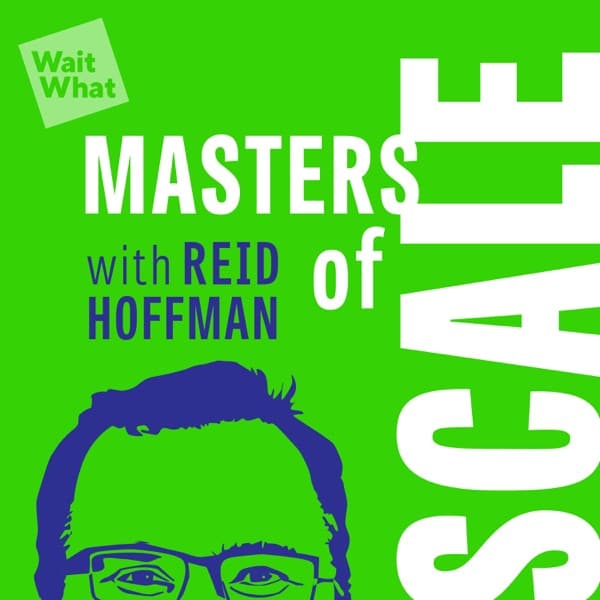 Masters of Scale
Masters of Scale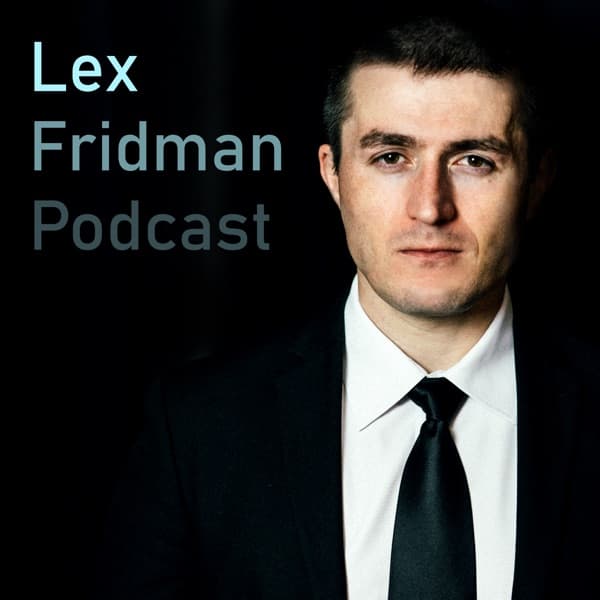 Lex Fridman Podcast
Lex Fridman Podcast All-In with Chamath, Jason, Sacks & Friedberg
All-In with Chamath, Jason, Sacks & Friedberg Modern Wisdom
Modern Wisdom a16z Podcast
a16z Podcast Lenny's Podcast: Product | Growth | Career
Lenny's Podcast: Product | Growth | Career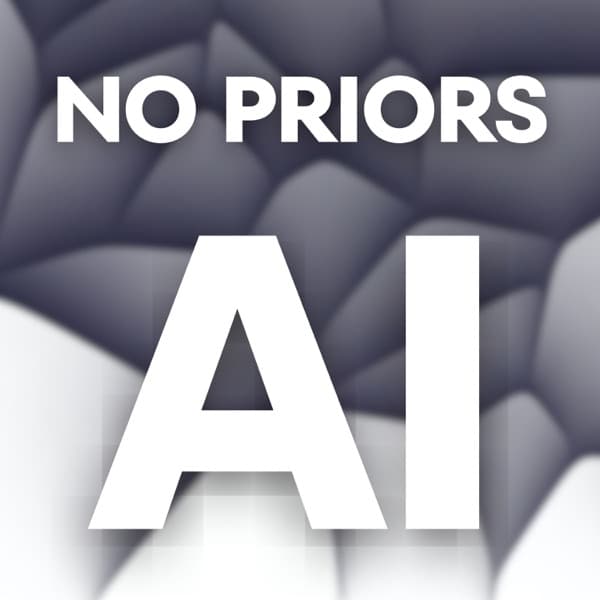 No Priors AI
No Priors AI The Twenty Minute VC (20VC): Venture Capital | Startup Funding | The Pitch
The Twenty Minute VC (20VC): Venture Capital | Startup Funding | The Pitch How I Built This with Guy Raz
How I Built This with Guy Raz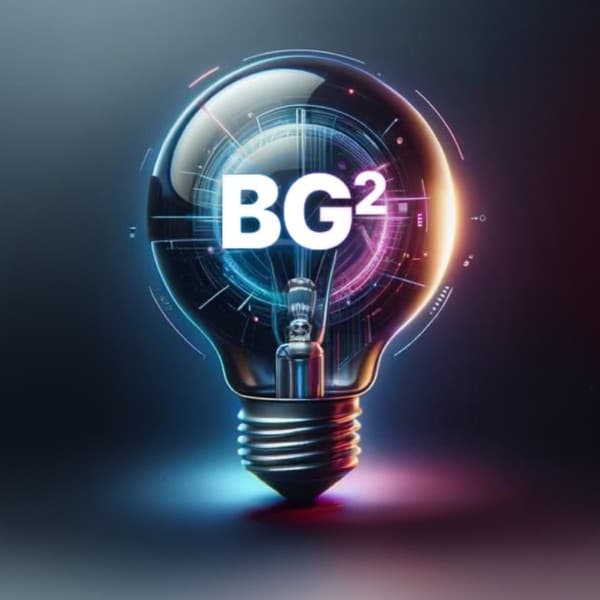 BG2Pod with Brad Gerstner and Bill Gurley
BG2Pod with Brad Gerstner and Bill Gurley TechCrunch Startup News
TechCrunch Startup News Y Combinator Startup Podcast
Y Combinator Startup Podcast


